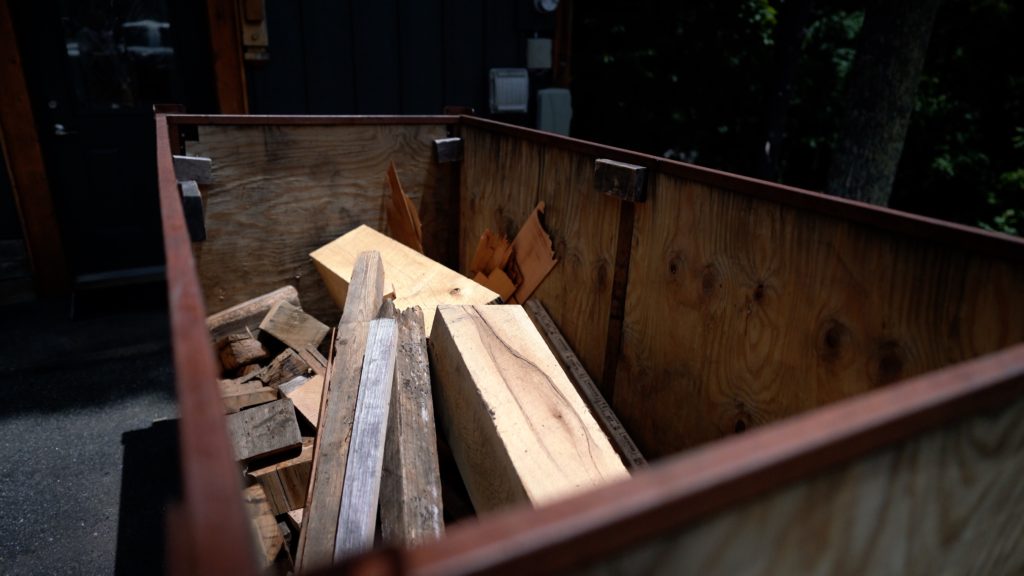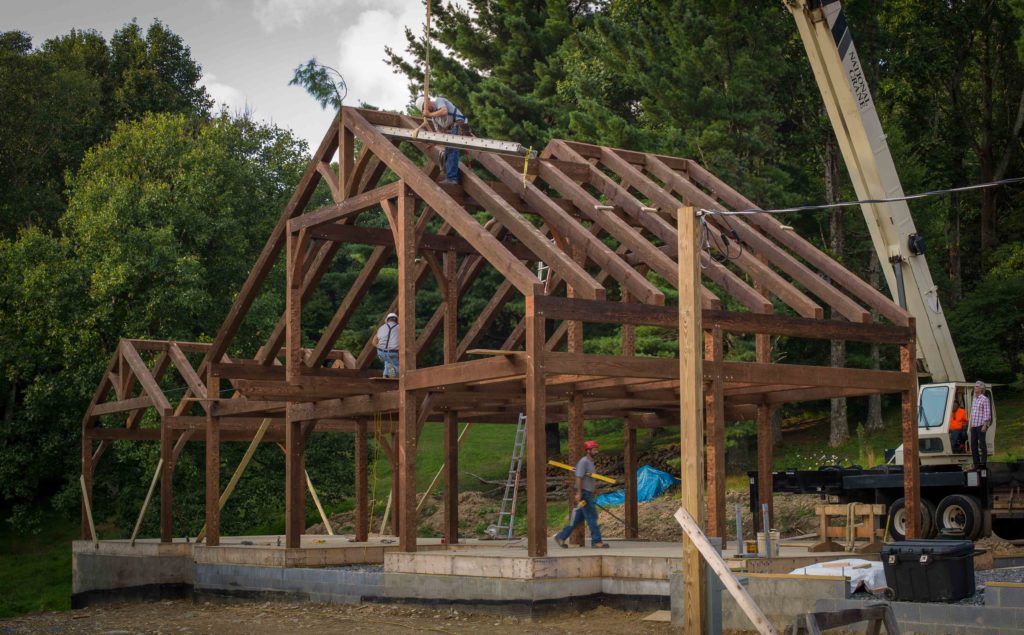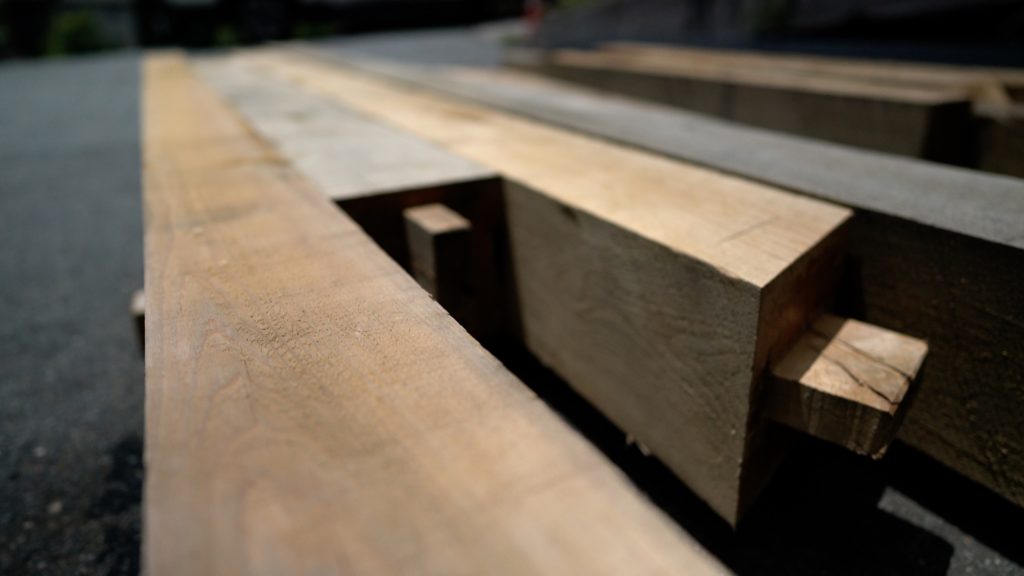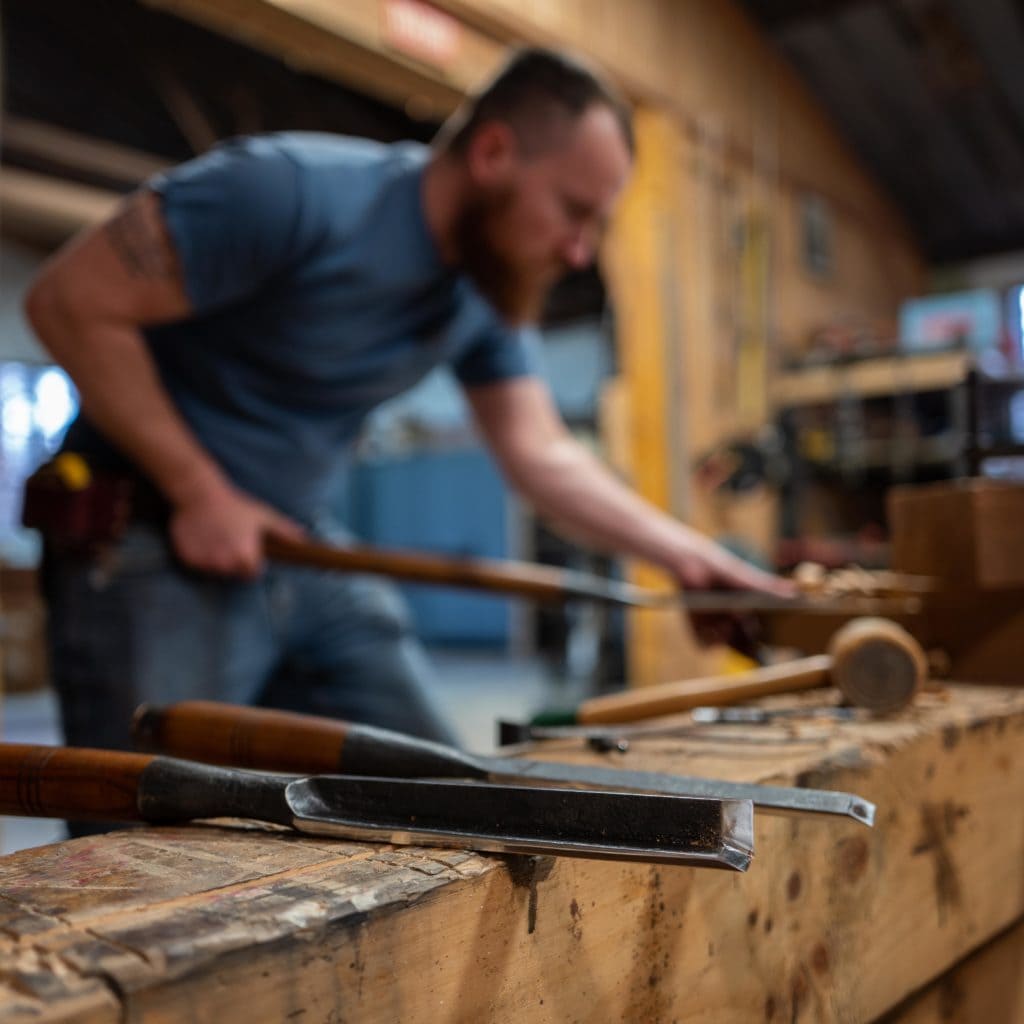It’s starting to feel a lot like a new beginning for the company…
- Building a state-of-the-art new manufacturing building this year.
- Relocating from Boone to West Jefferson, North Carolina, once the building is finished.
Next up: a radical investment
Carolina Timberworks is making a radical investment in order to make every tree count. It’s radical for two reasons:
- There is an inherent conflict with our passionate 16 year commitment to hand-cut traditional timber framing.
- The cost of this investment is significant.
Why do it then?

…worldwide, we are building… “the equivalent of an entire New York City (all five boroughs) every 35 days” …and plan to continue to do so for the next 30 years.
Bruce King, The New Carbon Architecture

Constructing and operating buildings accounts for nearly half of all US energy consumption and fossil fuel emissions.
–US Energy Information Administration
A look in the mirror
For 16 years we’ve cut our timber frames mostly by hand using a combination of power and hand tools. This process results in what we timber framers call “drops” – the left-over pieces that drop to the ground when a timber is cut to length. We used to heat our building with some of our drops, but now they go into a bin which is regularly emptied by locals wanting firewood. Here’s a look at our scrap bin last Friday:

We fill this bin up with drops about once a month. Put into context, over the course of a year, this bin will contain 15,185 board feet of wood–more than enough to build this timber frame every year:

It gets worse: drops aren’t our only waste.
For one thing, we’re human and we make mistakes: we lay out or cut timbers wrong from time-to-time. In some cases they can be reused–for example, we’re putting some into our new building. Usually, however, they are not reused, and become waste.

A shift in thinking about the cutting process
Early next year, we will be cutting our timbers differently. Imagine a German-made state-of-the-art computerized milling machine extending the full 80′ length of our new building. After the operator loads our 3D drawings into it, this new machine will load one timber at a time, and begin work by cutting a perfectly square cut on one end. Then it will advance the timber automatically and cut with incredible precision all the timber frame joinery for that particular piece. Finally the saw finishes up by cutting it exactly to length, and loads the next piece.
Software keeps getting smarter and smarter
This investment is going to cut our waste because it does something humans can’t do very well–optimization. Before we order wood, the software will create a sawmill list. Once the timber arrives at our timber frame shop, we’ll upload the sawmill list for the project (or it can even utilize a list of inventory on hand). Then, according to parameters we set, the software will sort through all the 150 or so parts for that particular timber frame and determines exactly which 2 or 3 parts could be cut from that particular beam which will result in the least possible loss of wood.
Now to blow your mind. Suppose 3 of our upcoming timber frames are White Oak. The way we do things now is to move all the wood for the first job into our building and work on that job until we finish it. Suppose the optimization software optimized all 3 White Oak jobs at once–and the machine cut all 3 at the same time?
So how is this going to make the planet a better place?
Scientists refer to the process as carbon sequestration, but we like to think of wood as a carbon sponge. A tree is nature’s solar-powered CO2 storage machine, until the day it dies. Then, if left to rot–whether in a forest or landfill, or the wood burned–the sponge is wrung out and the CO2 returned to the atmosphere.

Here’s the interesting thing: take that same tree and keep it dry, perhaps as part of a building in the form of a timber frame or your great grandfather’s dining table, and it will last indefinitely. Hundreds of years. Longer than concrete.
So, timber frames are part of the solution to our climate change problem.
So too is reducing the amount of wood that is burned or allowed to rot.
Through the acquisition of computerized cutting equipment and material optimization software, we estimate our wood waste will decrease by between half and two-thirds.
This is not the end, just the beginning…
We’re not giving up traditional craftsmanship–in fact we’re growing and plan to hire even more craftspeople. Instead, we think of this machine as one more tool in what is already a pretty well-equipped timber frame shop. To be honest, after you’ve cut a 1,000 mortises and tenons by hand, cutting the next one isn’t that much of a thrill. We’re all getting older, and timber framing is hard on a timber framer’s body. We’d rather put our hard-earned hand crafted skills and experience to work designing better timber frames that last longer and go up quicker. And when we have the urge to put chisel and hammer to wood, we’d rather choose what we cut by hand (machines have trouble with curves, not to mention twisted, irregular, nail-filled, and totally gorgeous, hand-hewn antique beams).

One more thing
Over the years, we’ve noticed that our customers plan their lives around the schedule for their project. This investment is part of our continued commitment to present and future customers to ensure reliable delivery dates as Carolina Timberworks grows.